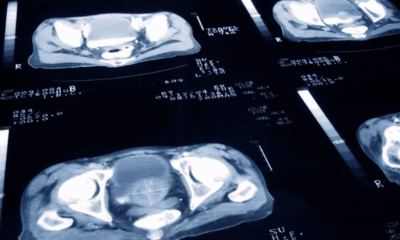Health
Hospital Bed Numbers Decline Across Europe, Sparking Concerns for Future Crises
European healthcare systems are witnessing a significant decline in hospital bed numbers, raising questions about their preparedness for future health crises. Experts attribute the trend to shifting healthcare priorities, technological advancements, and differences in national health policies.
Declining Numbers Highlight Disparities
Data from Eurostat reveals that the average number of hospital beds in the European Union (EU) fell from 563 per 100,000 people in 2012 to 516 in 2022—a drop of more than 8%. Some nations experienced declines exceeding 15%, including Finland (-51%) and the Netherlands (-39%).
The trend underscores disparities in healthcare systems. Bulgaria boasts the highest ratio, with 823 beds per 100,000 people, followed by Germany (766) and Romania (728). At the other end of the spectrum, Sweden recorded the lowest figure, with only 190 beds per 100,000 people, trailed by the UK (242), the Netherlands (245), and Spain (294).
Key Factors Behind the Decline
According to experts, the reduction in hospital beds reflects efforts to improve efficiency. “Eastern European systems traditionally focused on bed and doctor ratios, while Western Europe invested in advanced healthcare technologies,” explained Dr. Elmer Diána of Hungary’s University of Pécs.
Technological advancements and shorter inpatient stays have also reduced the need for hospital beds. The Organisation for Economic Co-operation and Development (OECD) cites a shift toward outpatient care as a primary driver of this decline.
Liina-Kaisa Tynkkynen from Finland’s Institute for Health and Welfare noted that Finland has centralized healthcare services and replaced hospital beds with elderly residential care facilities. Sweden adopted similar reforms, reorganizing specialized care services.
Growth in Some Nations
While most European countries saw declines, some bucked the trend. Bulgaria reported a 25% increase in hospital bed numbers, attributed to the rapid expansion of private hospitals. Ireland and Turkey also expanded their capacities due to population growth, increasing their hospital beds by 14% and 16%, respectively.
Concerns Over Future Readiness
Experts warn that declining hospital bed numbers could pose risks during health emergencies, as seen during the COVID-19 pandemic. Tynkkynen cautioned that the pandemic highlighted the importance of maintaining sufficient inpatient care capacity, particularly in crisis scenarios.
Dr. Rodney Jones, a healthcare statistical advisor, argued that bed numbers alone may not fully reflect readiness. “Deaths per population and resource allocation to community-based care are equally critical metrics,” he said.
A study in Value in Health Regional Issues emphasized the need to balance bed reductions with investments in human resources and primary care. “Developing robust healthcare infrastructure is essential to tackle future crises effectively,” concluded Diána.
Despite the decline, the debate continues over whether fewer hospital beds signal greater efficiency or vulnerability in Europe’s healthcare systems.
Health
Europe Faces Growing Challenges in Meeting Medical Care Needs, EU Report Shows

A new report has highlighted stark disparities in healthcare access across Europe, revealing that a growing number of citizens face unmet medical needs due to systemic issues such as high costs and long waiting times.
According to the latest data from Eurostat and the Health at a Glance: Europe 2024 report, 3.8 per cent of EU residents aged 16 and over reported unmet medical needs in the past year. However, the percentage climbs significantly when focusing solely on individuals who actively required healthcare services — with some countries reporting unmet needs among over 20 per cent of this group.
The causes are twofold: healthcare system barriers, including long waiting lists and treatment costs, account for 2.4 per cent of all cases, while 1.4 per cent stem from personal reasons such as fear of doctors, lack of time, or lack of knowledge about available care.
Unmet healthcare needs vary widely across the continent. Estonia tops the list within the EU, with 15.5 per cent of people reporting unmet needs, followed closely by Greece and Albania, each over 13 per cent. Even wealthier Nordic countries show surprising figures — Denmark (12.2 per cent), Finland, and Norway (over 7.5 per cent) — despite high healthcare spending. Conversely, countries such as Germany (0.5 per cent), Austria (1.3 per cent), and the Netherlands (1.4 per cent) report the lowest levels, pointing to more efficient and accessible healthcare systems.
Cost is a dominant barrier in nations like Greece and Albania, where over 9 per cent of citizens cited unaffordable care. In contrast, long waiting times are the primary issue in countries like Estonia (12 per cent) and Finland (7.5 per cent).
Income inequality also plays a major role. On average, 3.8 per cent of low-income individuals across the EU report unmet needs due to healthcare system issues — more than triple the 1.2 per cent reported by higher-income groups. In Greece, that gap is particularly wide, with 23 per cent of low-income respondents affected.
Healthcare experts say these disparities reflect more than just economic factors. Dr. Tit Albreht, President of the European Public Health Association (EUPHA), noted, “Unmet health needs arise from different reasons, including how well healthcare governance integrates services to meet population needs.”
Industry leaders, such as Tina Taube of the European Federation of Pharmaceutical Industries and Associations (EFPIA), stressed the importance of timely access to diagnosis and treatment. “Unmet needs are context-specific,” she said. “It’s not just about product availability, but also healthcare system readiness.”
Andy Powrie-Smith of EFPIA added that patients in some European countries wait up to seven times longer than others for the same treatments due to regulatory delays and varying national infrastructures.
The findings underscore the need for a more coordinated, equitable healthcare strategy across the continent, especially as Europe faces the challenges of an ageing population and increasingly complex medical technologies.
Health
Chinese Nationals Charged in U.S. with Smuggling Toxic Fungus Labeled a Potential Agroterrorism Threat

U.S. federal authorities have charged two Chinese nationals in connection with smuggling a dangerous agricultural fungus into the country, a move investigators describe as posing significant national security risks.
Yunqing Jian, 33, and Zunyong Liu, 34, are accused of conspiracy, smuggling, making false statements, and visa fraud after allegedly attempting to bring Fusarium graminearum — a toxic fungus capable of devastating crops and harming humans and livestock — into the United States. The case was detailed in a court filing by the Federal Bureau of Investigation (FBI) in Detroit.
The fungus, which targets essential food staples like wheat, maize, barley, and rice, is described in a scientific journal cited by the FBI as a “potential agroterrorism weapon.” Experts warn that its spread could inflict serious damage on global food security and agricultural economies.
U.S. Attorney Jerome Gorgon Jr. emphasized the seriousness of the case, stating: “The alleged actions of these Chinese nationals, including a loyal member of the Chinese Communist Party, are of the gravest national security concerns.”
Jian made her first appearance in a Detroit federal court on Tuesday and remains in custody awaiting a bond hearing scheduled for Thursday. A court-appointed attorney for her initial appearance declined to comment.
According to the FBI’s complaint, the investigation began in July 2024 when Liu was stopped at Detroit Metropolitan Airport. During a routine screening, customs officials discovered suspicious red plant material in his backpack. Liu initially claimed not to know what it was but later admitted he planned to use it for research purposes at the University of Michigan, where Jian is currently employed and where Liu previously worked.
Authorities say Liu’s mobile phone contained an article titled “Plant-Pathogen Warfare under Changing Climate Conditions,” raising further concerns about the intended use of the samples. The FBI believes the two individuals were coordinating to introduce the pathogen into a U.S. research setting without proper clearance or oversight.
Liu was denied entry to the U.S. and deported in July. Charges against both individuals were filed this week, as prosecutors continue to investigate the scope of the alleged conspiracy.
The case underscores growing concerns in the U.S. over biosecurity and potential misuse of scientific research amid rising geopolitical tensions.
Health
US Expands Measles Vaccination Guidance Amid Global Surge in Cases
-

 Business1 year ago
Business1 year agoSaudi Arabia’s Model for Sustainable Aviation Practices
-

 Business1 year ago
Business1 year agoRecent Developments in Small Business Taxes
-

 Politics1 year ago
Politics1 year agoWho was Ebrahim Raisi and his status in Iranian Politics?
-

 Business11 months ago
Business11 months agoCarrectly: Revolutionizing Car Care in Chicago
-

 Business11 months ago
Business11 months agoSaudi Arabia: Foreign Direct Investment Rises by 5.6% in Q1
-

 Technology1 year ago
Technology1 year agoComparing Apple Vision Pro and Meta Quest 3
-

 Politics1 year ago
Politics1 year agoIndonesia and Malaysia Call for Israel’s Compliance with ICJ Ruling on Gaza Offensive
-

 Sports10 months ago
Sports10 months agoKeely Hodgkinson Wins Britain’s First Athletics Gold at Paris Olympics in 800m


























